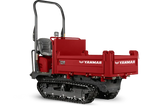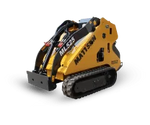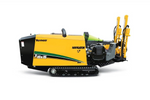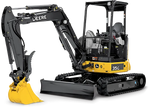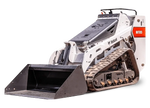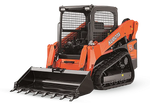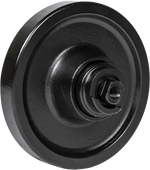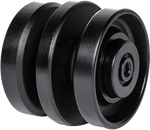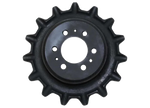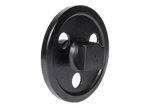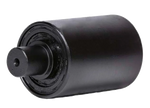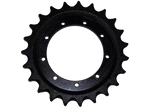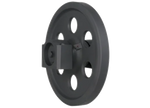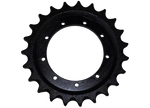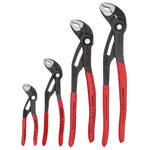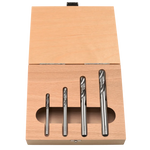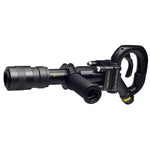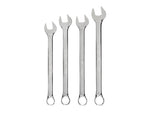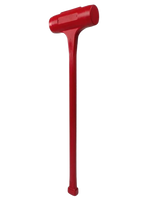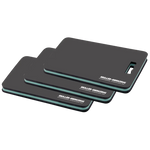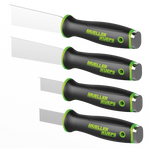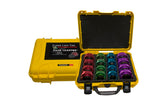Although it’s obvious, check for fuel in the tank.
Check if the fuel type (winter, summer blend) is incorrect. Drain and refill with the proper blend to solve the problem.
Sometimes, air can enter the system due to leaks, repairs, or other factors, causing poor engine performance. You must bleed that air out of the system. You should bleed the air after each fuel filter change or when the engine has run out of fuel.
Do the following to bleed the air:
- Make sure the fuel tank is full.
- Open the right rear service door to access the primary fuel filter and water separator assembly.
- Check that the fuel shutoff valve is open.
- Turn the key switch to the ON position for 10 – 15 seconds. The electric fuel solenoid pump will start to bleed air.
- Wait 30 seconds before trying to start the engine.
- Start the engine. Check the fuel supply system for leaks. If the engine doesn’t start, repeat the procedure.
A clogged fuel filter will restrict the fuel flow to the engine, affecting its performance. Change it or check if whoever installed it did it correctly.
A clogged fuel filter looks darker due to the accumulation of contaminants and debris. There might be stains or wet spots on the outside of the filter, especially around the connections where fuel enters and exits the filter, and in some cases, the filter may emit a strong odor.
Check also if the air filters are too dirty and replace them if necessary.
Next, take a look at the primary fuel and water filter separator. The first option is to drain the water from the container. Three things might happen if the engine problem persists:
- The filter is clogged.
- The installation wasn’t correct.
- You didn’t prime the filter after the installation.
We recommend changing the O-ring every time you replace the fuel filter to guarantee a proper installation.
Priming refers to filling the separator with fuel and removing any trapped air or water from the filter system before operating the equipment.
To prime the fuel system, turn the ignition on for about 30 seconds (don’t start the engine). Turn the ignition off, and crank the engine for 15 seconds. If it doesn’t start, repeat the first step.
When the engine has a slow cranking speed, it might be due to a poor electrical connection or a low battery. Try first cleaning, tightening the battery and starter connections, and charging the battery. If it doesn’t work, replace the battery.
Finally, make sure the engine oil has the correct viscosity. If not, drain the crankcase and refill.
Engine oil viscosity is vital for cold starts. Using oil with the wrong viscosity can make it too thick at low temperatures, leading to difficulty starting the engine. Cold starts will be slower, and until it warms up, the engine won’t run smoothly.
If the engine doesn’t crank, clean the battery terminals and connections. Also, look for and adjust loose connections.
Next, inspect the following fuses:
- Check the main relay 10 amp fuse (F4).
- Start 5 amp fuse (F6).
- Engine 5 amp fuse (F16).
- Pilot shut off 5 amp (F17).
- Engine Control Unit 30 amp fuse (F63).
The fuse panel is under the right control lever. Remove the cover to access the fuse panel.
One last reason the engine doesn’t crank can be a low battery level. In that case, charge or replace it.
Poor engine performance can result from clogged air and fuel filters. Replace them, and clean the fuel tank inlet screen.
If the fuel filter doesn’t look too dirty, reinstall it and put the O-ring seal correctly.
Check if there’s air in the system. You already know how to bleed the air from the previous section.
Inspect the engine oil level. If it’s low, it’ll affect the engine’s performance due to excessive friction.
Another reason for performance failure can be low-quality fuel. Drain the fuel tank, change the primary fuel filter and water separator, bleed the air, add fuel, and clean the fuel tank inlet screen. Don’t forget to prime the system before starting up the excavator.
Contact your authorized dealer if the problem concerns the engine speed control system or the injection pump.
Clogged air filters and poor-quality fuel can also cause excessive fuel consumption.
There also might be a leak in the fuel supply system. Find the source and repair it as required.
Finally, check if your machine’s exhaust system is restricted. In that case, contact your authorized dealer.






